

|
 
 CHAPTER 13 THOMAS EASTMAN CAPTAIN OF THE FRIGATE GEORGE CANNING Thomas Eastman Thomas Eastman was born in London being baptized ten days after he was born on September 10, 1770 in Christchurch of Spitafields. He was a ship and insurance broker and became a most respected member of Lloyd´s of London. According to the Robertson brothers ( Letters from South America ) ¨ Mr. E was a Londoner and as most of their best class he had the typical cockney traits one of them being his unsurmountable aversion for riding horses¨. Eastman owned a small fleet which connected the British commerce with India and South America. During the Napoleonic Wars the French squad seized and sunk many of his vessels but Eastman managed to recover from these losses. In 1810 he traded with Buenos Ayres. Eastman is mentioned in a trial in which his proxy Peter Kendall claimed to Thomas Gowland for a third of value of a vessel called Fanny. Eastman founded in the Río de la Plata the Eastman, Brinton y Cía house with branches in Río de Janeiro and Canton. Note: Christchurch is situated in the Commercial Street few steps from the Liverpool underground station. The church was built between 1714 and 1729 being big, solid and most beautiful at night. The term cockney is often used to refer to working-class people of London, particularly east London, and the slang used by these people. A ¨true ¨ cockney is often said to be someone born within earshot of the Bow Bells, i.e. the bells of St Mary-le-Bow in Cheapside in the City of London. 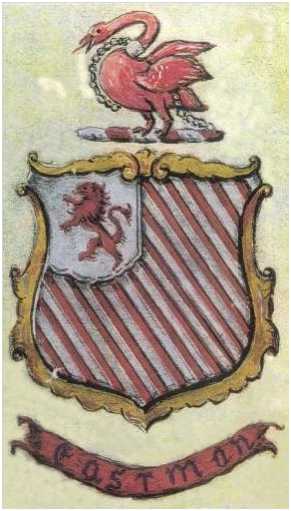
The Eastman
family coat of arms The surname Eastman is patronymic in its origin and means ¨the son of Easthund ¨. Easthund is an ancient English surname meaning protecto. which changed its ending to ¨man ¨. The earliest records date back to Ricardos filius Esthund who is mentioned in 1195 at the Essex rolls.. Filhius means ¨son of ¨. In the Cambridge files of 1273 we can find the names of Geoffrey, Cecil and Hugo Esthund. (Eastman coat of arms-http:// home.mchsi.com/~george.eastman/coatofarms.htm )  Original brass plaque of Thomas Eastman´s enterprise in London ( Kindly submitted by Cristina Eastman de Amoroso ) Eastman arrived to Buenos Ayres on March 9, 1813 aboard the British Frigate George Canning of which he was the owner. During the voyage Eastman became quite fond of Lieutenant Colonel San Martín, Peter Kendal and his sisters Frances ( 23 years old ) and Mathilda Kendall ( 20 years old ). 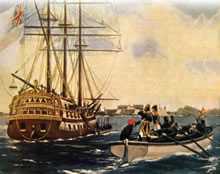 British Frigate George Canning ( Kindly submitted by Luis Eastman ) Thomas Eastman´s profile The Robertson brothers wrote a full chapter depicting Eastman adventures in the Paraná with Thomas Fair. Although they don´t mention his surname, he is described as the favourite among his countrymen.. A stout gentleman, of middle height, active and averaging forty years old. He was known as ¨the old E¨ as a result of his earnest character and his fatherly disposition. His kindness and good heart were proverbial. He was somehow gloomy( as a result of domestic misfortunes which I must not mention) amidst happy moments and that increased the attraction for those who really loved him. If during a bachelors´ meeting someone happened to mention the name of any vessel Mr E would immediately stare the doorhead and after smoking his cigar and drinking a glass of Port Wine he would fully describe the history of such ship, where could it be found, where had she been lately, where was she built, which was her cargo, who was her captain, who was her owner, how old was she, which was his registry and then he would fully describe some extraordinary or interesting event which happened during one of her long voyages. In 1821 Eastman was the first to subscribe for the first protestant cemetery which was situated besides the Iglesia del Socorro. His name is mentioned in El Argos newspaper on June 14, 1823 as one of the bosses of the Saving Bank ( Caja de Ahorros ). Eastman had his office at Victoria Street 57 (now Irigoyen). El Argos , was a newspaper founded on June 5th, 1820 by Colombian medicine doctor and trained agronomist José Fernández Madrid, who became later President of Colombia. El Argos which published 34 issues supported the struggle for the South American countries´ independence. Thomas Eastman married to Anne Elizabeth (Mary) White on May 7, 1793 at Saint Peter, Leeds, Yorkshire and they had three sons: John, Edmund, Thomas and a daughter Sybella. John , as we will see later settled in Buenos Ayres while Thomas and Edmund departed to the Pacific coast. In Valparaiso, Thomas was in charge of the Waddington, Templeman y Cía. House and died single in Arequipa in September 1837. Edmund ,who was a trader in Santiago and Valparaíso married in 1826 to María Tomasa Macaria Quiroga from Coquimbo and died in July 1875. Edmund became the head of the Eastman´s Chilean branch. 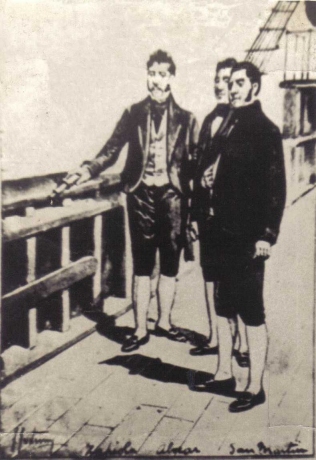 La Gazeta newspaper
published the following ¨ The
English Frigate Jorge
Canning, Captain Sebastián Julloch was dispatched by her trustee Diego
Winton for foreign harbours ¨- From left to right: Ensign José
Matías
Zapiola, Carlos María de Alvear y Balbastro and Lieutenant Colonel San
Martín. (Kindly submitted by Mrs Lucrecia Zapiola de Sanabria) 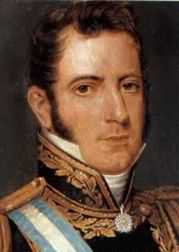 Carlos María de Alvear y Balbastro (1789-1852 ( Kindly submitted by the Departamento de Estudios Históricos Navales) Carlos María de Alvear y Balbastro was born in Santo Angel, Misiones son of the Spanish nobleman Diego de Alvear and the creole María Balbastro. On August 7th, 1804 General Diego de Alvear embarked in Montevideo towards Spain aboard the Frigate Nuestra Señora de las Mercedes together with his wife and sons. The fleet which sailed to Cadiz ws composed of four Frigates led by Brigadier José de Bustamante y Guerra. Then on October 5th, 1804 the Battle of the Santa María Cape took place near the Portuguese coast of Algarve. The Spaniards met a British fleet who threat them in spite of the Treaty of Amiens. Diego de Alvear and his son Carlos María were called to the Flagship Medea to translate the dialogue with the British. However, an intimating British cannon fire hit the Frigate Nuestra Señora de las Mercedes ´ magazine which sunk thus killing Diego Alvear´s wife and sons. The only survivor were Carlos María de Alvear and his father. Two months later, in December 1804 Spain declared war on Great Britain. The Spanish fleet was seized and taken to England where Diego de Alvear remained prisoner. His tragic story was so widespread in Great Britain to the point that the British government offered him a compensation for his losses. While attending Mass in England he met young Irish Luisa Ward with whom he married on January 20th, 1807 in Montilla (Córdoba). Diego de Alvear and Luisa Ward had ten sons. Carlos adopted for himself the name Carlos María in memory of his beloved mother who died during the attack. In spite of such dramatic background Carlos was raised in the British culture. Carlos joined the Spanish Army, took part in the Napoleonic Wars and also in our independence war. In London he founded the Lautaro lodge San Martín being one of its members. In Montevideo Carlos María de Alvear led his forces against the Spanish Royal Army commanded by Gaspar Vigodet. Then he later substituted José Rondeau. Alvear had an enmity with José Gervasio Artigas and was leader of the Constituent Assembly of 1813. On January 9, 1815 Alvear substituted Gervasio Antonio de Posadas as Supreme Director. Alvear resigned on April 15 and exiled in Brazil till 1824. By that time it was clear he had an enmity as well with General San Martín. Alvear returned in 1824 and represented the United Provinces of the Río de la Plata at the Convention which took place in Bolivia. In 1826-1827 he was appointed War Minister of President Bernardino Rivadavia and commanded the forces which defeated the Brazilians at the Battle of Ituzaingo.In 1838 Juan Manuel de Rosas appointed him as Plenipotentiary Minister in the United States. Alvear died in New York. First Lieutenant of the Walloon Guards Barón of Holmberg Eduardo Kannitz, baron of Holmberg was born in Bohemia in 1778. His parents were Eduard Kaunitz and Amalia O'Donell. He took his military studies were made in Prussia between 1794 and 1795. Kannitz took part in the Napoleonic Wars as part of the Berg Duchy troops and later as an officer of the Spanish Walloon Guards. He was quite fond of botany and brought many unknown flowers to our country. On March 20, 1812 he joined the Northern Army as a Lieutenant Colonel leading Manuel Belgrano´s artillery. Kannits took part in the battles of Las Piedras and Tucumán. In 1813 he founded the first Sapper Company of the Argentine Army. The Baron of Holmberg married to Antonia Balbastro ( cousin of Carlos María de Alvear ). His son Wenceslao was a military as well and became aide-de camp of Juan Galo Lavalle. In 1821 he was in charge of the construction of fortress in the south of the province of Buenos Ayres and five years later he joined Alvear in the struggle against the Brazilian Empire. Kennitz died in 1853 after the birth of his first grandson Eduado Ladislao. 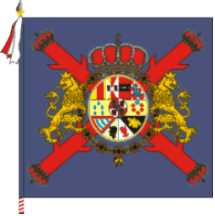 Flag of the Walloons Guards´ Regiment (1760-1815) ( Flags of the World-http://flagspot.net/flags/es^guard.html ) Note: The Walloon Guards were created by Philip V of Spain for his own protection. It was an Infantry Corp recruited in Flanders. Peter Kendall Peter Kendall was born on March 6, 1758 in South Wingfield, Derbyshire, England. His parents were Peter Kendall and Sarah Kirkham. On June 8, 1811 he bought from Lorenzo Ignacio Díaz a nearby ranch called Los Remedios in La Matanza but he later sold it to his brother-in-law James Brittain. Frances Kendall married to James Brittain and Mathilda Kendall did the same to John Ludham. This last wrote in his memories ( St John´s Anglican Church ) : ¨ I married in 1813 to Peter Kendall´s sister. The ceremony was officiated by Royal Navy Captain Peter Heywod commander of the Frigate Nereus . There was no protestant preacher at that time in this country. I think I was the first Englishman of that small community who married in Buenos Ayres¨ Harriet, the third sister arrived later and married in 1818 to Thomas Fair. In 1822 Kendall was associated with George Mcfarlane as Kendall & Macfarlane. In 1813 Peter Kendall is mentioned in La Gazeta as giver of $50 ¨for the widows of those who died in the battle of Salta ¨ . Kendall returned to England in 1818 and married to Jemina Elizabeth Russell with whom he had two sons. In 1846 Kendall wrote a letter to Lord Palmerston requesting help for ending the blockade of Buenos Ayres which was affecting the British commerce in the Río de la Plata. Peter Kendall died in London on February 21st, 1854. Thomas Eastman takes part in the inaugural trip of our first steam boat On November 13, 1825 the first steam engine Brig Druid departed from Buenos Ayres. She was brought (after 62 days of sail navigation ) from Gibraltar up to the entrance of the Riachuelo. The engine was installed in our country. Pastor S. Obligado author of Tradiciones Argentinas referred that the ship, the register, the captain, the sailors and even the oil among her screws were British. Buenos Ayres had at that time 3,000 Englishmen of which 300 had families settled in our country. Admiral William Brown was seatted at the head of the dining room´s table and Captain Bell occupied the opposite side. Miss Sheridan seatted at the right of Admiral Brown and was followed by Mr O´Brien, Miller, Armstrong, Hannah, Eastman, MacKinlay, Angelis, Wright, Wilson, Leslie, Harrison, Norton, Gibson, Davis, Morgan, Thompson, Marrat, Lynch, Atkits, Brittain, MacDougal, Zimmerman, Klappenbach, Newton, Plowes and Bevans. Among the Argentine passengers were Rivadavia, Zapiola, Erézcano, Manuel Belgrano, Riglos, Balcarce y Sarratea. The death of Thomas Eastman 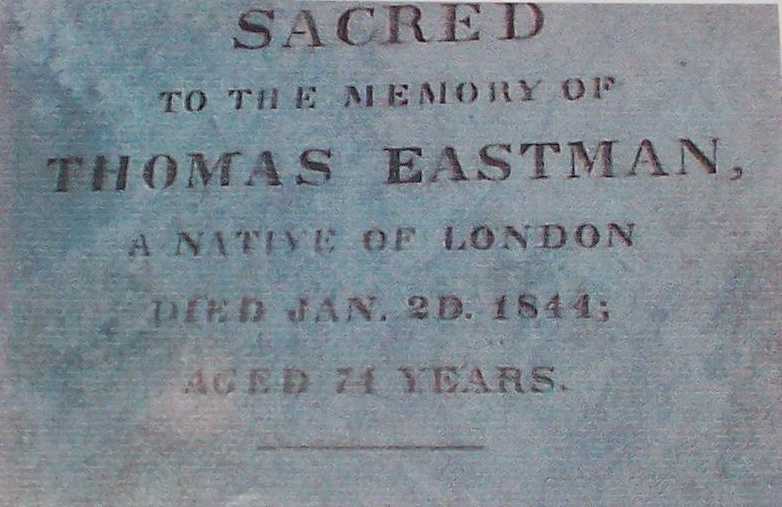 Thomas Eastman´s gravestone at the Buenos Aires British Cemetery To the memory of Thomas Eastman A native of London Died Jan 2 D 1844 Aged 74 years Upright and honorable in life, he bore a terminal illness with dignified resignation. --------------------- Not even. ---the dread of something after death The undiscovered of country from whose bourne No traveler returns could daunt his spirit, conscious of impending dissolution he saw his last hour approach with calmness and fortitude ---------------------- Tribute of filial affection “ On the 2nd inst, aged 74, after a lingering illnesss, Mr Thomas Eastman, native of London, and many years a resident in this country “ ( Obituary published at the British Packet ) John Eastman John Eastman, the son of Thomas Eastman and Anne Elizabeth White, arrived to our country on April 2, 1830 from Rio de Janeiro aboard the Brig-packet boat Ellen whose captain was Donald Campbell. John Eastman married on July 30,1831 to Juliana Isla the fourth daughter of don Antonio Isla and Juliana Josefa Zapiola y Lezica with whom he had several children: Tomas Pedro who settled in Montevideo and married to Uruguayan Isolina Donata Illa Viamonte (1842-1911). This last was the daughter of Manuel Francisco Illa (1805-1887)and Albana Viamonte of Buenos Ayres (1815-1876). Albana was the daughter of General Juan Jose Viamonte and Bernardina Chavarria. Other children were Lino Eduardo municipal adviser who married to Spanish Josefa Lara, Adela Laurentina who married to Alvaro Barros, Julia married to Benjamin Zapiola, Enrique Martiniano, Alberto Dionisio, Ricardo Fidel ( who was a provincial deputy between 1882 and 1884),Juan Agustin and Dionisia Sofia. In 1834 John Eastman had a pharmacy in Defensa Street 11 (later in Defensa 7). In October 1844 Eastman associated with Oliver J. Hayes and A. Lines van Blarcon and owned a drug store called O. J. Hayes and Co. In 1852 Van Blarcon left the society. The society was dissolved in October 1853 giving rise to another drug store called Juan Eastman & Co whose associates were George Spurr, Charles A. Burguess and Benjamin Zapiola. In 1849 Eastman together with other British settlers published at La Gazeta Mercantil an announcement requesting that Don Juan Manuel de Rosas could remain in the government. John Eastman died on September 28, 1874 and his son Lino Eduardo Eastman took care of the drug store.
Note:
John
Eastman was born in London in 1807 and entered
our country when he was 23 years old. At first he trade with India
until 1834 when he opened the drug store in Defensa Street Nº 11. This
last was later owned by Mr. Demarchi.. Eastman sold some popular drugs
like Pectoral of anacahuita, Scott´s emulsion, Bristol´s sarsaparilla,
agua florida and Lanman & Kemp´s products. In 1847 he became a
member of the Buenos Ayres British Hospital board. On May 15, 1848 he
took part as godfather of Carlos Pellegrini´s baptism at the Iglesia de
la Merced. Pellegrini became later President of the Republic. In 1841
Eastman was a founder member of The Strangers Club and in 1856
he
represented the Scottish insurance Company The Northern Assurance
Co. In 1858 he was appointed as substitute edile of the parish
Catedral al
Norte. 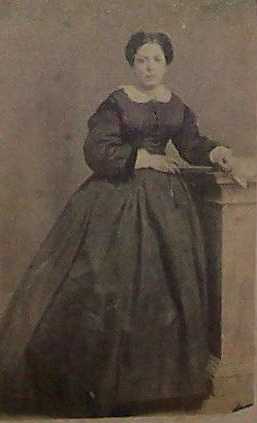
( John Eastman´s daughter married to Benjamín Zapiola) The Eastman´s Argentine branch Adolfo Enrique Eastman (1905-1991) was born in Montevideo ( Uruguay ) and was the son of Delfino Adolfo and Constante Lowry . He married to Helena Catalina Mulhall who was born on December 25, 1907 and died when she was 93 years old. Helena was the grand-daughter of Eduardo Mulhall who founded The Standard newspaper. They had several son: Licenciate Luis Eastman married to María Alicia Chiappe, Helena Leonor ( married to Carlos Alberto Costantini , parents of Isidro, Paula, Ignacio, and Jaime ) , Constancia Isabel married to Carlos Grau Baena ( parents of Carlos, Connie, Tomas, Celina and Rosario ), Adolfo Tomas Eastman married at first to Ana Maria Maurer ( parents of Ariel Eastman Maurer ) and married later to Adriana Aureguy ( parents of Johanna Eastman ).
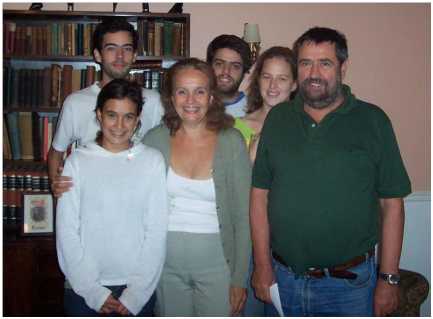 The Eastman´s Branch in Uruguay Tomás Pedro Eastman ( 1834-1898) married to Isolina Illa Viamonte (1842-1919) of Uruguay. Tomás Pedro lived in Montevideo and worked as the Argentine consul. He founded the Herrera-Eastman Bank. Tomás Pedro had a quinta with a Moorish palace situated in the Agraciada street in El Prado neighborhood ( Montevideo ). This last building is actually considered an historical building and is occupied by the Uruguayan Army. Tomás Pedro and Isolina had several children too: Isolina ( married to a Chilean gentleman called Vialvello ), Adela ( married to Jaime Castells Carafi of Uruguay ), Valentina ( married to Carlos Álvarez ) , Delfíno Adolfo (1869-1924) who was born in Montevideo ( married to Constante Lowry Perry of Uruguay ), Edmundo married to Maria Adela Montero of Uruguay and Albana married to Gonzalo Ramírez of Uruguay . Delfino Adolfo Eastman created a process called Eastmanization which is a pasteurization-like treatment of milk. It was succesful in Argentina but not in Uruguay. Delfino Adolfo Eastman created in Montevideo the first mounted cigarrette . 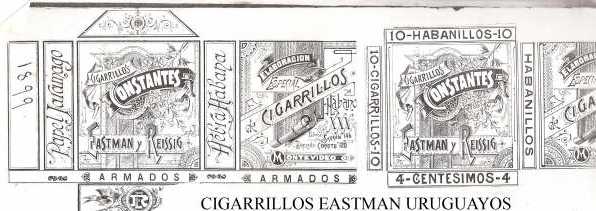 (Kindly submitted by Lic.Luis Eastman) The Eastman´s Branch of Ecuador This branch had its origin in the Chilean gentleman Victor Eastman Cox who arrived in 1909 to Ecuador as the Chilean Plenipotentiary Minister. He was 40 years old when he married to María Lasso de la Vega y Chiriboga. This last was closely related to Don Diego Sandoval, one of Quito´s founders whom Emperor Charles V bestowed on December 20 1534 a coat of arms and a manor house. One of his sisters, Avelina married to General General Leonidas Plaza who was appointed in two occasions as President of Ecuador. His other sister Clemencia married to one of President Eloy Alfaro Olmedo´s sons. Victor Eastman Cox y María Lasso de la Vega had five children: Víctor José, Gloria, Adela, Patricio and María Isabel. Adela married to Carlos Tobar Zaldumbide a gentleman from Quito who became chancellor during the government of Camilo Ponce (1956-60). 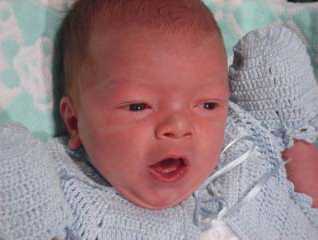 Thomas Eastman Salazar born in Guayaquil on Jan 7, 2007 Final words Thomas Eastman was not only an authentic gentleman from London who took part in a historical voyage but an icon of our independence and the seed of a big family tree whose branches spread out to Argentina, Chile, Uruguay, USA. and Ecuador. We have seen his fruits through the many generations who served and keep working in our country. Let this be our most heartily acknowledgement. Bibliography -Bazzurro, Daniel ( Personal communication) -Don Tomas Eastman-La Nación- 3 de enero de 1949. -Eastman, Luis Lic. ( Personal communication ) -Hanon, Maxine-Diccionario de Británicos en Buenos Aires, Buenos Aires 2005. -Howat, Jeremy-Anglican Marriages in Buenos Aires prior to 1825- http://homepage.ntlworld.com/jnth/StJMarrs/early_marrs.htm -Mulhall E.T.- Foreigners resident in Buenos Ayres in 1863-The River Plate Handbook for 1863. http://homepage.ntlworld.com/jnth/Mul1863/BADirC_D.htm -Navarro Viola, Jorge-El Club de Residentes Extranjeros: Breve reseña histórica en homenaje a sus fundadores-Imprenta Coni, Buenos Aires, 1941. -Obligado, Pastor S. y Gálvez, Víctor –Tradiciones de Buenos Aires- Editorial Universitaria de Buenos Aires. -Rauscher, Carlota-El Primer Cementerio de Disidentes-Buenos Aires 1821-1833-Historias de la Ciudad – Una Revista de Buenos Aires” ( N° 9, Mayo de 2001). 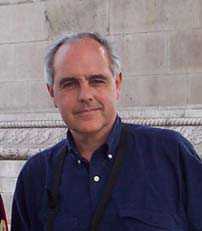 About the author Dr. Eduardo César Gerding was born in Buenos Aires on August 23rd, 1950 and joined the Argentine Navy in 1976 . He was the first physician assigned to the transport ship ARA “Canal Beagle” during the 1978 conflict with Chile. Since 1987 till 1990 he was appointed Chief of the Medical Department of the Marine Corps 5th Battalion in Río Grande (Tierra del Fuego). Member of Number of the Instituto Nacional Browniano. Dr Gerding usually writes medical articles for the International Review of the Armed Forces Medical Services ( Belgium ) and naval historic articles for The Buenos Aires Herald and The Southern Cross. Former Chief of Gastroenterology at the Buenos Aires Naval Hospital. He retired as Lieutenant Commander Medicine Doctor and since 1995 is a Life Member of the United States Naval Institute. Member of the Roddis Society for the History of Navy Medicine ( USA ). Founder in Argentina of the SARRRAH Project together with the University of Lübeck and the DGzRS ( German Maritime Rescue Service) . Dr Gerding received the ¨Domingo Faustino Sarmiento¨ award in May 2003, during the celebration of the Naval Center 121st anniversary. In 2006, after his lecture at Willoughby Hall ( University of Nottingham ) he founded in Argentina the Nottingham-Malvinas Group. On September 13, 2008 was appointed Member of the Scientific Comité of the Internacional Review of the Armed Forces Medical Services. Dr Gerding is married, his wife Elsa is the grand-daughter of a former engineer of The Netherlands Army. They have two sons and a daughter: Dr. Andrés Eduardo Gerding ( Gynecology & Obstetrics ), Dr. Carolina Ingrid Gerding ( Lawyer ) , and Alan Eduardo Gerding ( Industrial Engineer) . |